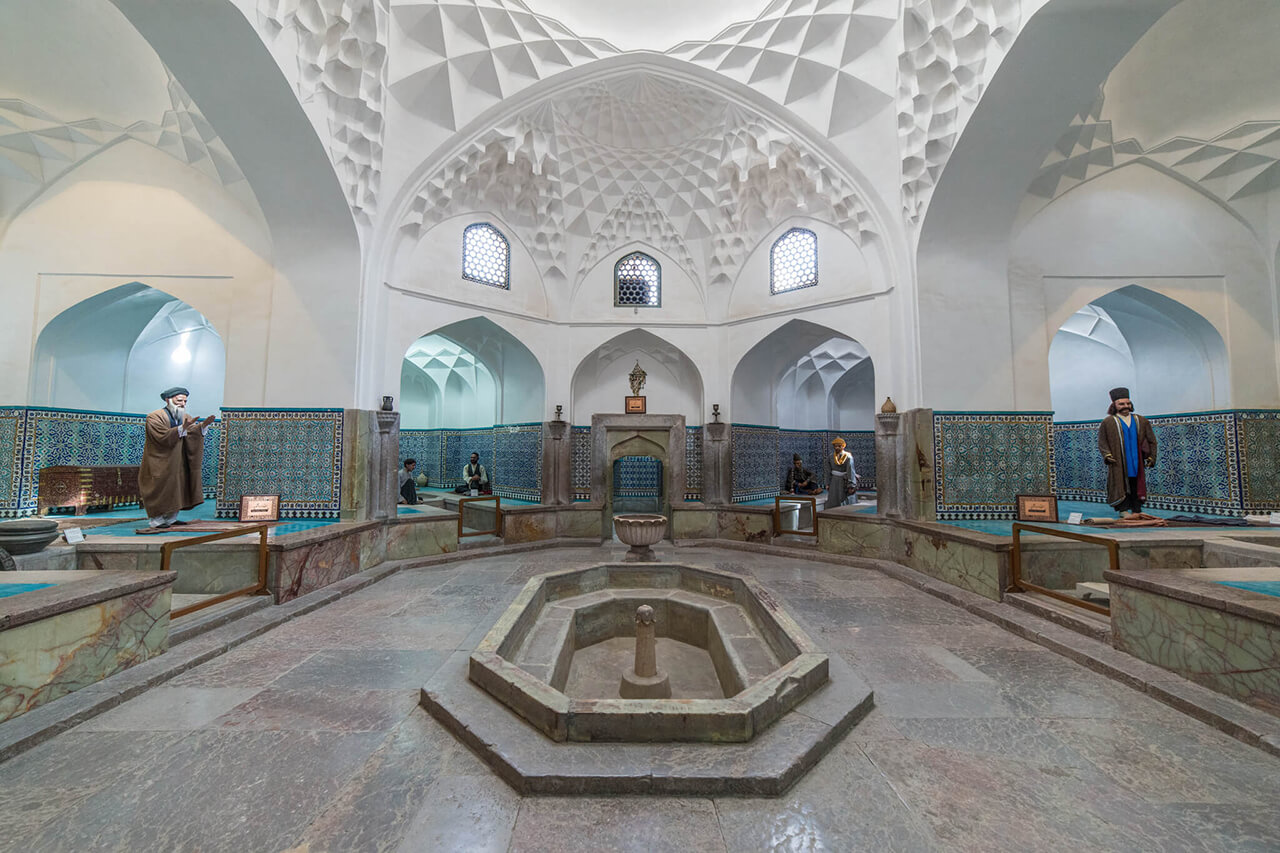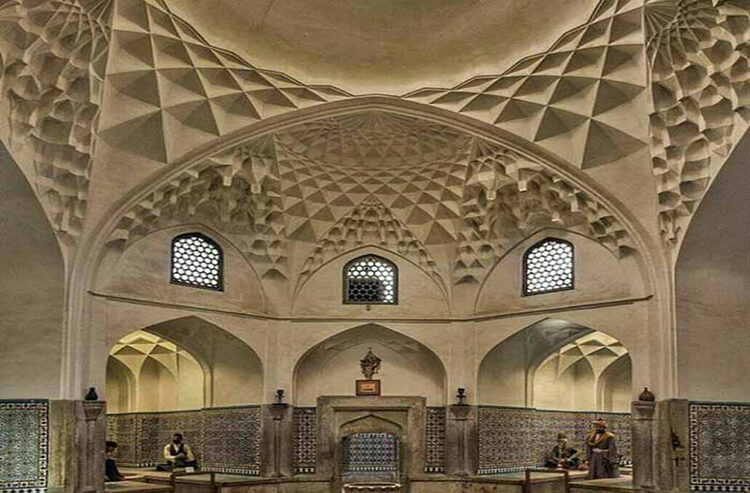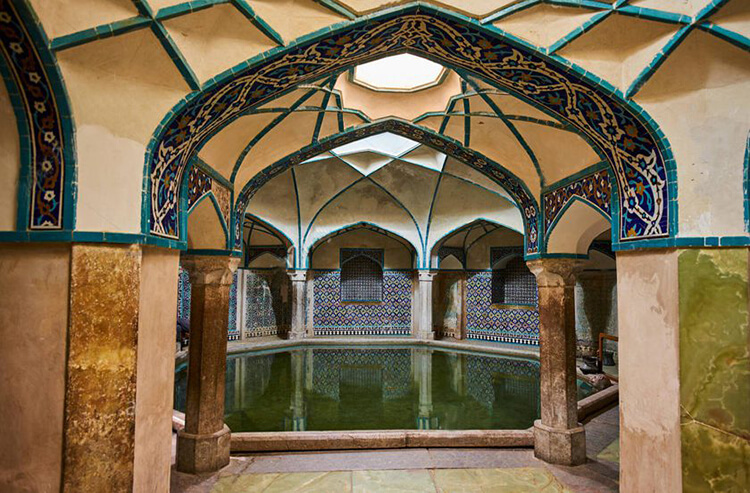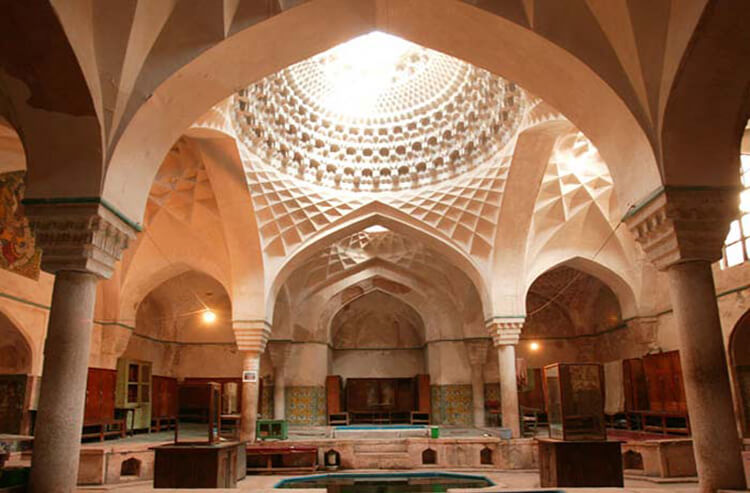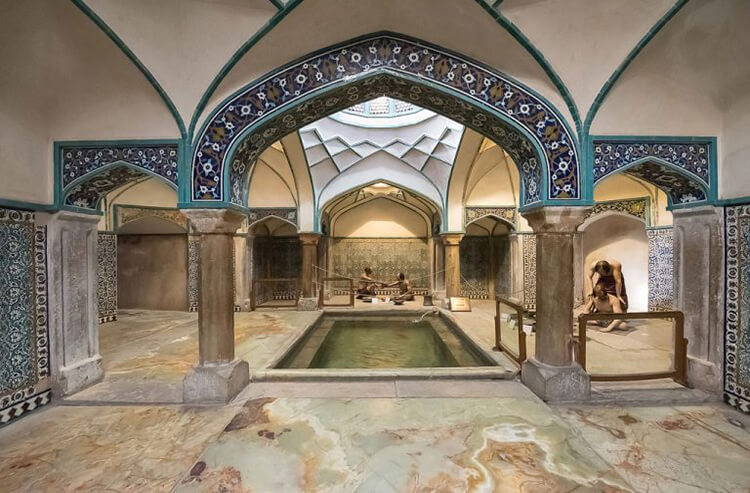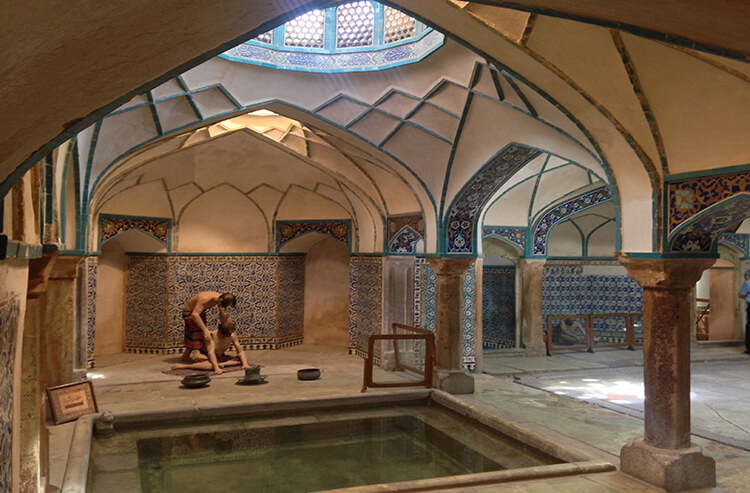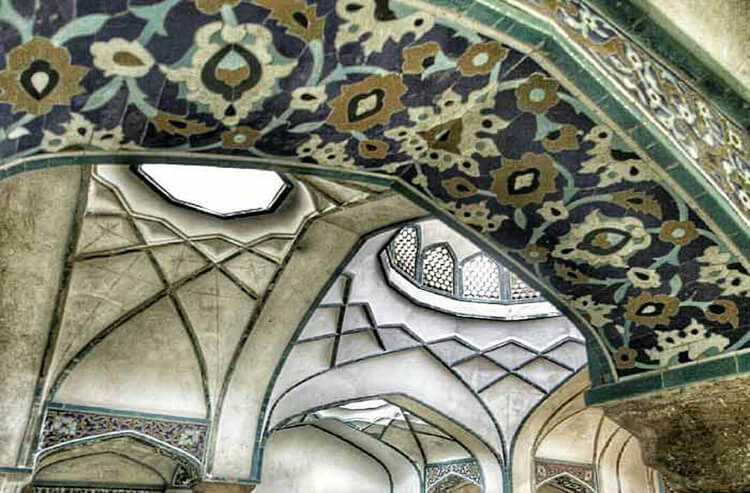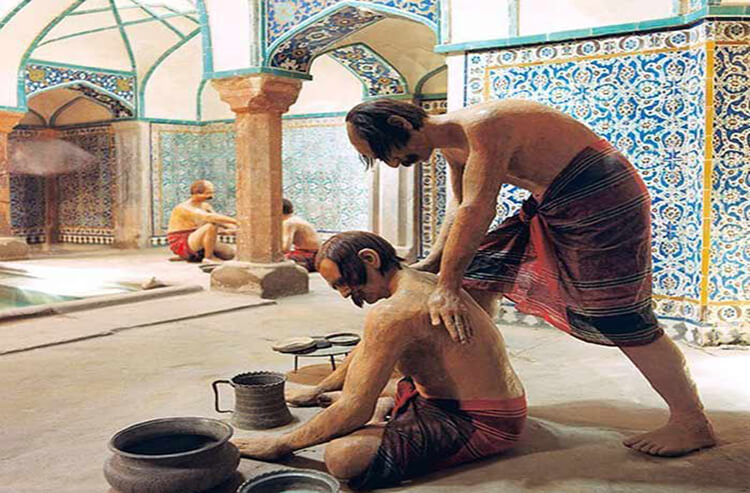Ganjali Khan bath
Ganj-Ali Khan Historical Complex, including a spectacular bathhouse with the same name, is one of the most beautiful historical sites in Iran’s south-eastern Kerman province.
When Ganjali Khan came to the kingdom, decided to build up the city. He built a large field with a length of more than 100 meters and a width of 50 meters to create a public promenade in the middle of Kerman.
The Ganjali Khan Complex is a Safavid-era building complex, located in the old centre of Kerman. The complex is composed of a school, a square, a caravanserai, a bathhouse, an Ab Anbar (water reservoir), a mint, a mosque and a bazaar.
Built in 1631, the Ganjali bathhouse is located on the southern side of Ganjali Square. The entrance of the building is painted with ornaments of the Safavid era.People used this bathroom until 1316 and the bathhouse was converted into an anthropological museum in 1971.
Ganjali Khan’s bathroom architecture
Ganjali Khan bathroom is a trace left by the king of Kerman but Ali Mardan Khan, his son, seems to have changed it in the present form. Professor Mohammad Yazdi has been building this bathroom and his calligraphy is from Alireza Abbasi. The bathroom is 64 meters long and 20 meters wide and covers an area of 1280 square meters. Entrance hall, cloakroom, cabinets, ovens, wardrobes, chaise and private parts are parts of this bathroom, which are also seen in many other historic baths.
Studies show that bath water was provided by a pipe from the aqueduct near the Ganjali Khan field. This bathroom depicts the combination of architectural art and the application of various materials with a suitable space. Democratic architecture refers to construction with components and sizes appropriate to human needs.
The main features of the architecture used in this bathroom are:
The use of mosaic tiles, seven colors and adobe tiles, with a human image
Utilization of aqueduct water and water supply network to Khazine, Homes, Sarbine, ponds and numerous fountains.
How to heat the air in the bathroom and how to seal the water tanks and warm the water
The height of the narrow and long corridors and the height of the dressing room
The shape and decorations of the middle pins and facets
Design of inputs and outputs proportional to space
An interesting feature of the bathhouse’s architectural finish is that the sculptured stones of the ceiling are matched with those of the flooring.
